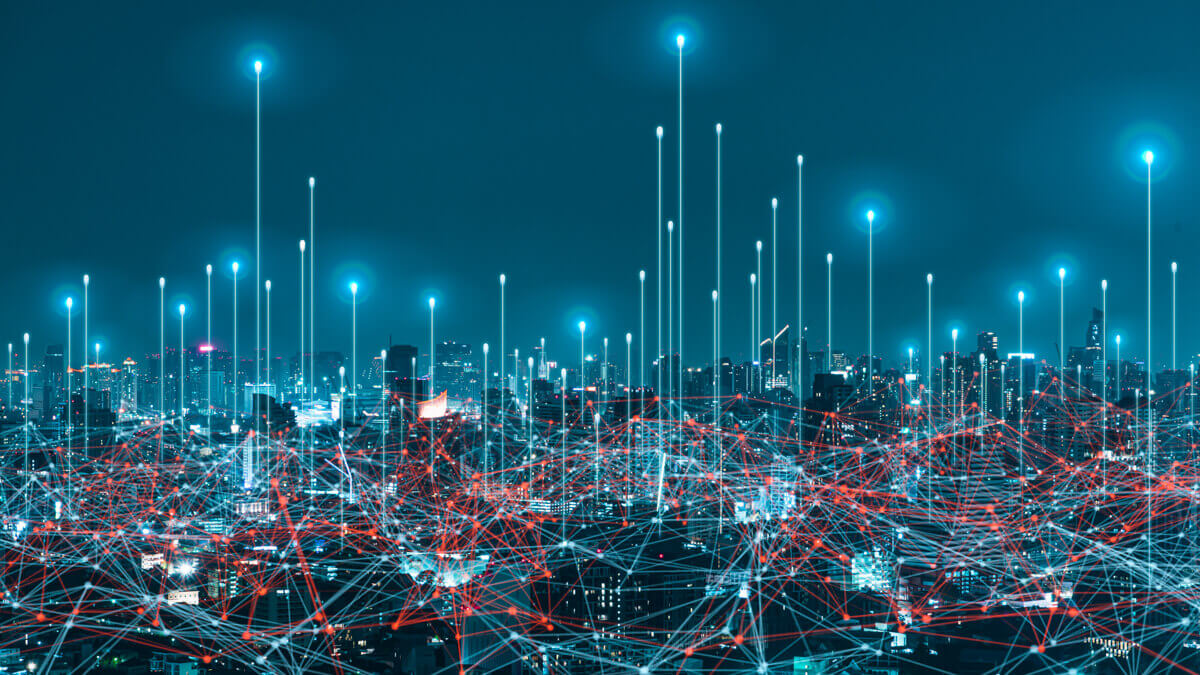Vast amounts of data need to be processed because of the growth IoT devices.
This is only going to get worse as times goes on. That’s why companies are turning their attention to Edge computing.
This article will explain Edge computing and explore what lies ahead for this up-and-coming computing method.
Computing at the Edge
With 6.5 times more connected devices than people on our planet, it’s fair to say that the boom in data generated by these devices is a lot for data centers to handle.
The cloud offers a way to relieve these crowded data centers from increased processing loads. However, Edge computing is an alternative option that delivers faster information processing than both on-premises and cloud centers currently offer.
But what is Edge computing? Well, it’s a computing model that occurs near or at the data source.
Historically, most data is processed using centralized computing, where the central cloud can sometimes be thousands of miles away. Data is processed through major cloud vendors such as Google, Amazon Web Services (AWS), and IBM in centralized computing. Functions in large cloud computing systems are often dispersed across numerous locations, each of which is a data center.
If you’re not at the center, you’re at the Edge of the network. That’s where Edge computing gets its name. It brings compute, analytics, and storage closer to the devices and locations that initially generate data.
Organizations are becoming interested in the concept of the Edge because of how it can solve a growing number of network computing challenges.
The key to all this is how Edge computing allows data to be processed locally. However, it’s important to note that cloud computing and Edge computing are not mutually exclusive in all instances. For example, we will almost certainly require both in autonomous vehicle use cases.
The Edge and vast quantities of data
Internet of things (IoT) based devices are on the rise and are already collecting petabytes of data. These large volumes of data can push data processing infrastructure to its limits, so it would be good to avoid streaming all that data to a centralized company data center or the cloud. Data transfer costs and latency would also be far too high.
Cloud computing is also struggling to keep up with the explosion of services and applications available in recent times. Latency, caused by network distance from the data source, is the main culprit here. The inefficacy that results is not an option for applications that require near-instant analysis and response times.
Edge computing is an alternative computing option that supports initiatives such as the IoT by allowing the data gathered by connected devices to be processed locally. Without a system like Edge computing in place, the tremendous amount of data collected by devices would quickly overwhelm a companies’ central data infrastructure.
Shuttling enormous amounts of data to cloud repositories for analysis could prove costly. Let’s look at modern manufacturing plants for some context.
Since a modern manufacturing plant with 2,000 pieces of equipment generates roughly 2,200 terabytes of data per month, it would be faster and easier to process all of that data closer to the equipment instead of sending it to a remote data center first.
Essentially, the exponential rise in data we are witnessing is creating significant challenges for organizations trying to store, manage, and analyze that data. As a result, networks are becoming increasingly overburdened, and user experience is suffering.
Edge computing helps address these challenges by giving organizations the power to analyze data close to where it’s collected.
The benefits of keeping data at the Edge
For years, developers have explored computing solutions that improve customer experiences without increasing costs or sacrificing security. Edge computing delivers significant advantages in these areas, including offering organizations better response times.
These advantages are primarily due to scaling down the long-distance communication flows between a cloud server and the client.
When data doesn’t need to go to the cloud for processing, bandwidth costs are lower, and server resources are spared. Organizations also benefit from the flexibility afforded by Edge computing. This is because Edge computing allows them to use and distribute their resources across multiple locations and generate valuable insights without an internet connection.
On top of this, Edge computing creates the opportunity for more real-time data analysis on Edge devices. The concept of increased data analysis is interesting to consider, especially since 90% of all data that enterprises collect is never actually used.
Thanks to its high connectivity and low latency, Edge computing is well-positioned to turn this previously unusable data into actionable insights that can enhance business outcomes.
While most data processing is still taking place at centralized data centers, organizations are discovering the benefits of Edge computing. It’s predicted that by 2025, 75 percent of data will be created and processed outside a traditional cloud or data center.
What does Edge security look like?
Currently, customers expect incredibly sophisticated and personalized experiences, which means that companies need to collect data to deliver these services.
While data collection is undoubtedly an expectation, it does raise questions surrounding security.
Edge computing avoids sending sensitive data to a central data center and lets organizations keep computing power and data storage local. Because of this, data is much more secure.
Keeping compute and data local makes it easier for organizations to adhere to regulatory policies and data security practices. Take, for example, requirements in the healthcare industry. HIPAA requirements state that data must stay in the jurisdiction where it is created. This is done to limit peoples’ healthcare data storage and transmission.
By its very nature, the Edge offers an easy solution to these sorts of regulations surrounding data collection.
Additionally, if security breaches occur on Edge computing devices, the threat can be centralized and isolated so that the entire network isn’t compromised.
All in all, by keeping data local, Edge computing offers an incredible level of security to both businesses and their customers, meaning that data collection can carry on safely and responsibly.
Edge computing – What does its future promise?
More companies are recognizing the benefits of integrating Edge technology into their systems.
We’ve already seen significant cloud providers like Google and AWS make strategic moves based on Edge infrastructure.
While most of today’s compute workloads still operate in cloud data centers, companies are looking to Edge computing to meet many critical requirements.
As a result, companies are shifting their workloads partially or entirely to Edge computing, and it seems as though this movement isn’t going to slow down any time soon.



